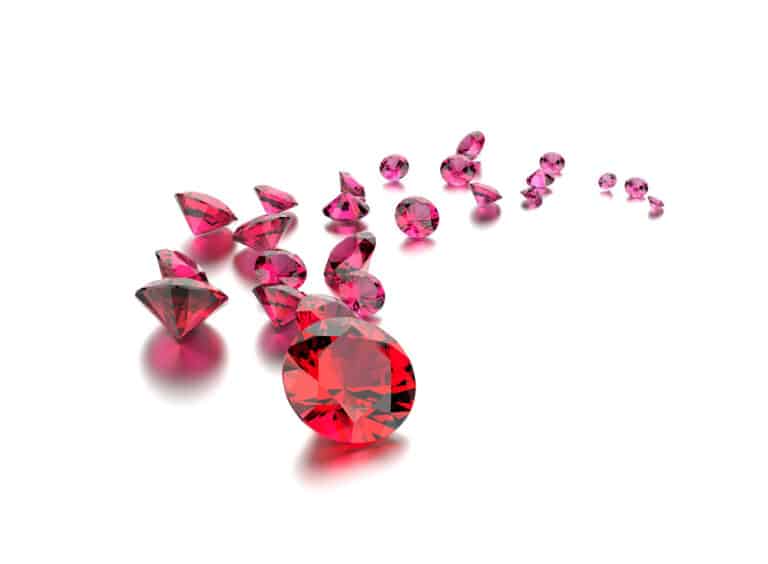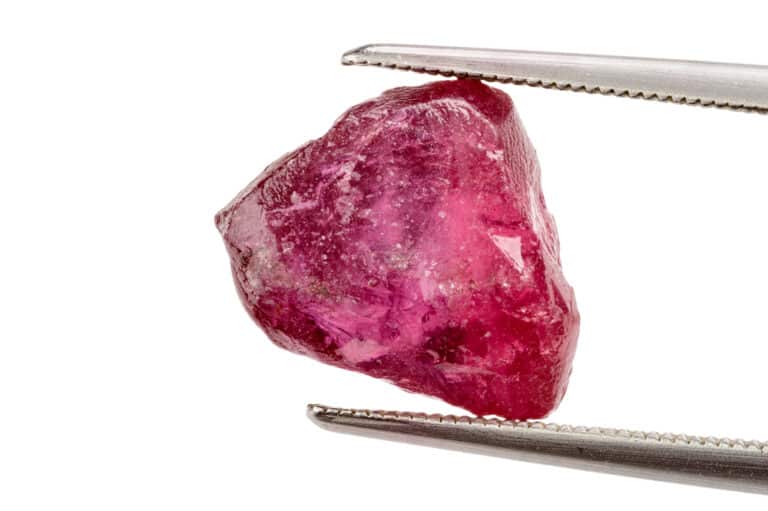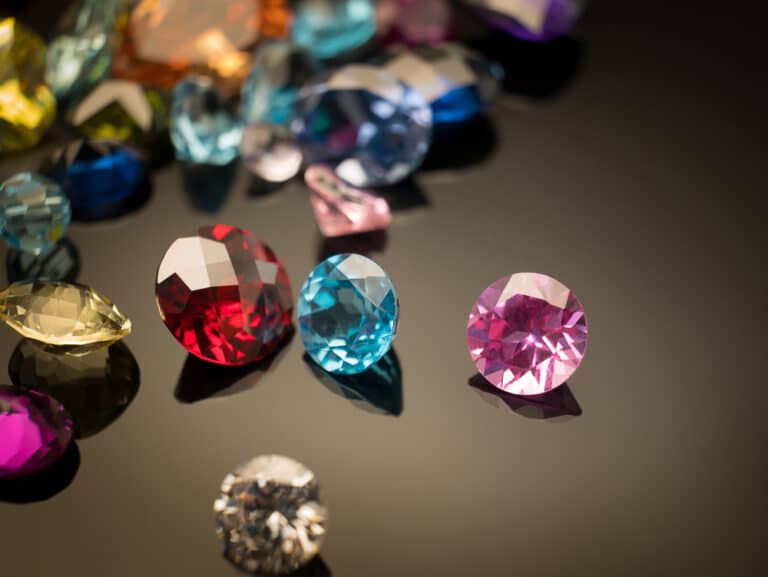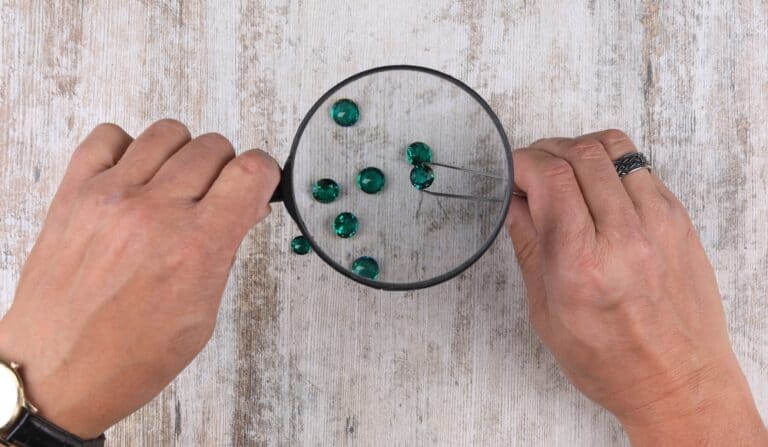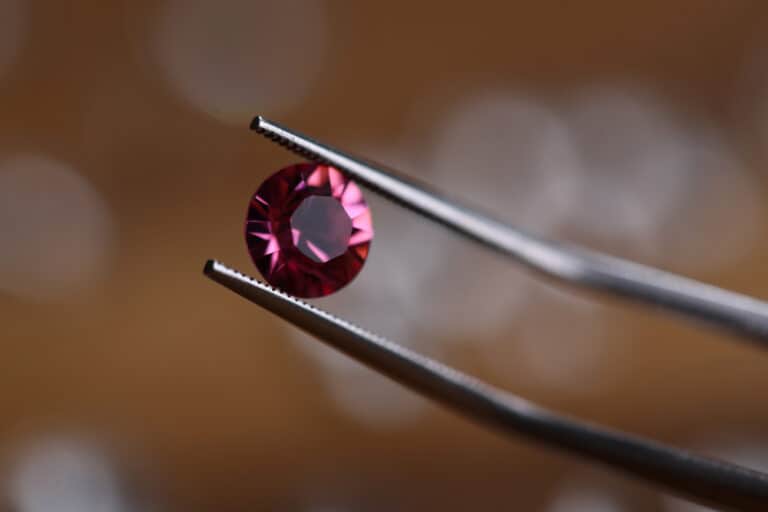Rubies and emeralds have long been associated with royalty, but how do these gemstones compare? You may say one is red, and the other is green, but is that the only difference? Furthermore, are there any similarities between the two?
Ruby consists of the mineral corundum, while emerald is part of the beryl family. Rubies are red due to chromium in the corundum, and emeralds are green to blueish-green. While rubies and emeralds are both highly prized precious stones, ruby is more valuable.
Color is the most noticeable, but rubies and emeralds have a few other differences that will influence their value, durability, and allure. Knowing these discerning qualities will help you select the right gemstone for your jewelry or collection.
How Do Ruby And Emerald Compare?
There are many discrepancies and a few similarities between rubies and emeralds. The most noticeable differences are illustrated in the table below:
| Comparing element | Ruby | Emerald |
|---|---|---|
| Mineral | Corundum | Beryl |
| Color | Red | Vibrant Green |
| Mohs Hardness | 9 | 7.5-8 |
Let’s take a deeper look at how these two gemstones compare in terms of composition, value, and a few other characteristics that make each stone precious in its own right.
Origins And Composition Of Ruby And Emerald
Often, a gemstone’s value is amplified by its origin story. It’s always fascinating to learn about your stone’s origin when selecting a gem for jewelry or collection. On the other hand, the composition influences the stone’s strength and suitability for specific uses.
Ruby’s Origins And Composition
Rubies, like sapphires, are formed from the mineral corundum. In its natural state, corundum is colorless. Other trace elements combine to give corundum its color. Ruby’s intense red color is thanks to the presence of chromium in the corundum.
Most rubies are found in Asia, particularly Southeast Asia. Cambodia, India, Thailand, and Vietnam are popular mining locations for rubies, but the best rubies are mined in Myanmar.
Burma rubies (as rubies from Myanmar are called) are the most sought-after and are often found in marble that contains high amounts of chromium.
Rubies have a rating of 9 on the Mohs scale and are incredibly durable and scratch resistant.
Emerald’s Origin And Composition
Emerald is part of the beryl family, including gemstones like aquamarine, green beryl, and morganite. Unlike green beryl, emerald contains trace amounts of chromium in the mineral, giving emeralds a deeper green color than green beryl.
Beryl is a relatively hard mineral, reaching 7.5 to 8 on the Mohs hardness scale. While emeralds aren’t quite as durable as rubies, they are strong enough for daily wear.
Emeralds are found in many countries worldwide, from the middle east and Africa to Australia and China. However, South America is the hotspot for emeralds, followed by Africa.
The top countries for emerald mining are:
- Columbia
- Brazil
- Zambia
- South Africa
- Mozambique
- Ethiopia
Rubies And Emeralds Differ In Color
Most people are familiar with red rubies and green emeralds, but do these stones come in other colors?
All rubies are red. As a member of the corundum family, trace minerals present in the corundum determine the color of rubies. Rubies are formed in the presence of trace amounts of chromium. The more chromium present, the more vibrant the ruby.
Any other corundum gem that possesses no chromium is considered a sapphire. Pink sapphires are the only exception to the rule. Although pink sapphires and rubies are technically the same stone, rubies that are too light or too pink are considered pink sapphires.
By contrast, emeralds are green. Specifically, a deep, saturated, vibrant green to blueish-green due to chromium in the mineral. Green beryls that are pale faded, or greyish green and contain no chromium are not considered emeralds.
Clarity, Cut, And Carat Weight Of Ruby Vs. Emerald
In addition to color, the clarity, carat weight, and cut of precious stones are known as the 4 Cs. The value of rubies and emeralds is determined based on the qualities of each of these four characteristics.
A stone’s clarity refers to the amount of “imperfections” in the stone, called inclusions. Some gemstones, like garnets, rarely have inclusions and are transparent, while others, like diamonds, contain varying degrees of inclusions.
Ruby’s Clarity, Carat Weight, And Cut
When buying rubies, color is the most important quality to look for. Clarity is the second most appealing quality of rubies. Fine rubies have a deep red color and very few inclusions, resulting in a prized stone with a vibrant glow.
Most rubies have inclusions, but they are often not noticeable, especially to an untrained eye. As long as the inclusions don’t structurally weaken the gem, there is no reason to avoid these rubies.
While chromium gives the desirable deep red color to rubies, it can also cause cracks in the mineral when it is formed. It is extremely rare to find large Burma or fine rubies. For this reason, the value of rubies increases with the carat weight.
Ruby can be cut in many different shapes, but brilliant and step cuts in cushion and oval shapes are the most popular.
Emerald’s Clarity, Carat Weight, And Cut
While most rubies are eye-clean, meaning the inclusions aren’t noticeable to the naked eye, emeralds have more visible inclusions.
Inclusions in emeralds are so common they are fondly called “Jardin,” which translates to garden from french origin. These visible inclusions often enhance each stone’s individuality.
The value of emeralds increases with their color and transparency, as pure green emeralds with few to no inclusions are incredibly rare.
Commercial-grade emeralds are available in larger carat weights compared to rubies. Emeralds are available in most cuts, but the cut used on each stone will depend on its color and clarity. Skilled gem cutters will choose the ideal cut to showcase the gem’s qualities without compromising the stone’s structural integrity.
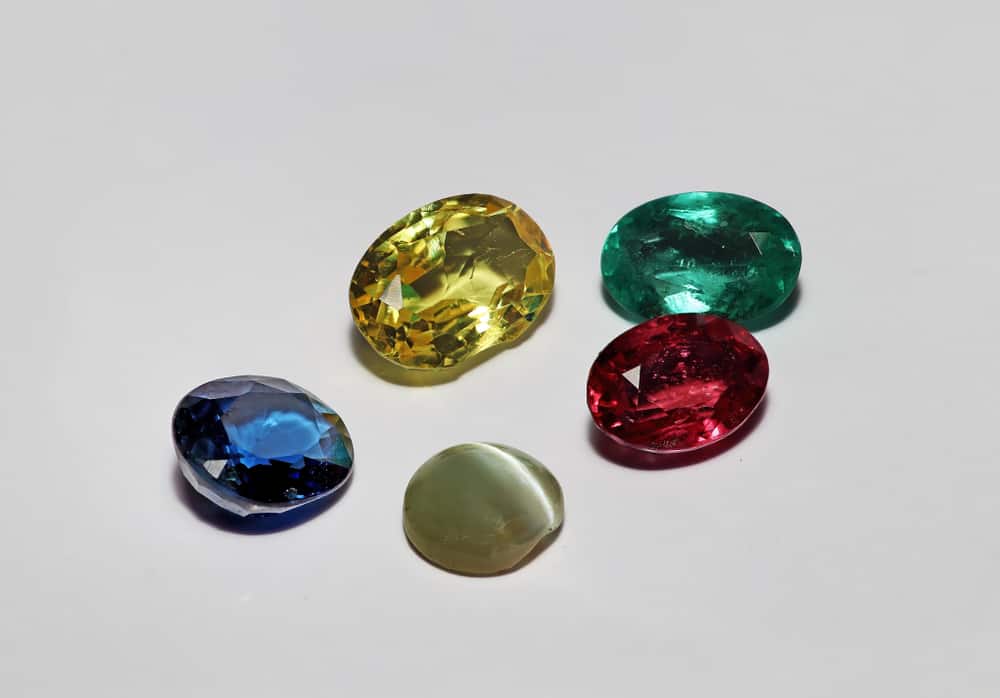
Lore And Spiritual Meaning Of Rubies And Emeralds
Gemstones have a long history in folklore and spirituality. The use of gemstones as protective amulets or “healing crystals” dates back to antiquity. Whether there’s truth in their powers, there’s something mystical about gemstones that add to their appeal.
Lore And Spiritual Meaning Of Rubies
Rubies are one of the oldest gems used for their perceived spiritual qualities. As most rubies are from the east, they played a significant role in ancient Hindu culture, where rubies were known as the “king of gems.”
Ruby’s vibrant, blood-red color is likely the reason for the stone’s association with health, sexuality, and the root chakra. Wearing ruby is believed to increase sexuality, fertility, and attractiveness.
Ruby symbolizes the following:
- Love and friendship
- Vitality
- Royalty
- Power
- Health
Ruby is the birthstone of July, associated with the Leo star sign. Rubies are also the gift of choice for lovers celebrating their 15th or 40th anniversary.
Lore And Spiritual Meaning Of Emeralds
While many gemstones have a spiritual meaning connected to them, the emerald has many medicinal and healing powers associated with it.
Since ancient Greece and Rome, people have used emeralds to protect against skin ailments, heart disease, and vision impairment. The ancient Egyptians were among the first to mine emeralds. Cleopatra adored emeralds, and ancient Egyptians believed these precious stones revitalized youth.
However, emerald’s most famed healing property is its ability to reduce eye strain. Emerald’s soft, vibrant green is pleasing for its beauty, but also because green is the most relaxing color to our eyes.
Emerald is the gemstone of Taurus and the birthstone of May. As a symbol of love, hope and truth, it is the ideal gift to celebrate the 55th year of marriage.
It is believed that emeralds possess the following abilities:
- Ability to glimpse into the future
- Protection against evil spirits and spells
- Combats disease and potential snake bites
- Relieves eye strain, headaches, skin irritations, insomnia, and allergies
Rubies And Emeralds Are Both Precious Stones
Despite all the differences between rubies and emeralds, they have one thing in common. Both of these gemstones are considered precious stones.
Gemstones are categorized as precious or semi-precious stones based on their value, strength, rarity, and perceived grandeur.
Of all the gemstones, there are only four precious stones, namely:
- Diamonds
- Rubies
- Sapphires
- Emeralds
Diamonds are the strongest gemstones on earth, but rubies and emeralds are not far behind with a Mohs hardness of 9 and 7.5 to 8, respectively. However, their color and rarity earn them a seat at the precious stone table. Rubies and emeralds are both much rarer than diamonds!
Difference In Value Between Ruby And Emerald
The value of a ruby or emerald will largely depend on the qualities mentioned above. A fine emerald can be more costly than a ruby of the same carat weight if the ruby has a less desirable color. It is possible to find rubies and emeralds of the same price if you are willing to compromise on one or more qualities.
That said, rubies are generally more expensive than emeralds and are considered one of the most valuable gemstones. The mineral corundum is stronger than beryl and, thus, more durable and less prone to scratching. Ruby is also much rarer than emeralds.
The chromium responsible for rubies’ color, unfortunately, also weakens the stone. For this reason, finding rubies that are larger than 1ct is rare. When comparing the value of larger rubies and emeralds, rubies will far outweigh emeralds in value and price.
Conclusion
Rubies and emeralds are prized precious stones with striking colors and excellent durability. Rubies are rarer than emeralds, slightly stronger, and more valuable. However, the emerald’s unmatched deep, vibrant green color and visible inclusions add to its charm. Both gemstones are exceptional choices for jewelry, engagement rings, or collection. It all comes down to personal preference!
References
- https://www.quora.com/What-is-the-difference-between-ruby-and-emerald
- https://www.angara.com/jil-magazine/is-emerald-more-expensive-than-sapphire-and-ruby/
- http://www.differencebetween.net/object/difference-between-ruby-and-emerald/
- https://www.gemsociety.org/gemstone-encyclopedia/
- https://www.gia.edu/
- https://www.americangemsociety.org/precious-metal-jewelry/
- https://www.brides.com/gemstone-meaning-5100907
- https://www.gemselect.com/other-info/gemstone-meanings.php
- https://www.brilliantearth.com/news/gemstone-meanings-the-surprising-symbolism-of-your-jewels/
- https://www.howitworksdaily.com/what-makes-a-gemstone-precious-or-semi-precious/

